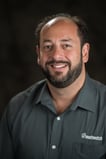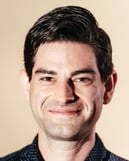DSO Thought Leaders’ Opinions on Changes and Challenges for DSOs in 2023
DSOPro polled its 2022 Happenings feature article participants to get their thoughts on the future of the industry.
DSOPro polled its 2022 feature article participants to get their thoughts on the future of the industry.
We asked our 2022 featured industry leaders: Where is the DSO industry now? What is the current state of affairs and what will be different from 2022? Where do you predict the industry is headed in 2023? And, any news or thoughts on emerging technologies in 2023?
AI was the topic of conversation in 2022 and seems like it will continue to be a hot technology not just for dentistry, but most if not all industries. However, there are other technologies and advancements that are important for dental groups to focus on, implement, and leverage. Keep your eyes on communication platforms, such as teledentistry and patient recall. Analytics, procurement, and revenue cycle management tools are being examined and implemented as well.
Tanner Applegate
Founder, Unify
 Over the last 3-5 years, the DSO industry has been heavily focused on a new-site growth mentality. A land-grab approach. This has left practice performance optimization as a secondary thought.
Over the last 3-5 years, the DSO industry has been heavily focused on a new-site growth mentality. A land-grab approach. This has left practice performance optimization as a secondary thought.
2023 will mark the year in which the industry shifts away from the stage of “Scale” into a new phase of “Optimization.” This means that DSOs’ priorities will begin to shift. DSOs will begin to prioritize individual practice optimization. Growth rates of organizations will continue, but at a slower pace than we have recently witnessed.
With this shift in priorities for DSOs comes a boom in technology that helps DSOs create quick and predictable wins toward practice optimization. To achieve these outcomes, the industry will adopt more technology from software categories such as revenue cycle management (RCM) automation software, procurement software, etc.
However, the software category that will have the biggest impact on DSO bottom lines is a brand-new category of technology that is not currently available but will begin to roll out in 2023. This category of new, unreleased software enables human-led process automation and standardization.
What is human-led process automation and standardization software? This technology will allow DSOs to be able to automate and simplify all the complex processes that take place in a dental office. This will take these processes from “difficult to train and execute with predictably positive results” to “simplicity” in which you could hire anyone with zero dental experience and have them do the work and produce excellent results day one. Think McDonalds-level simplicity but available for your dental office! Huge improvement of results with a huge reduction in labor costs!
 Despite the rapid increase of consolidation in the past decade, the industry is still only at the beginning of this movement. Not only will this continue, but we’ll begin to see a wave of secondary consolidation over the next few years.
Despite the rapid increase of consolidation in the past decade, the industry is still only at the beginning of this movement. Not only will this continue, but we’ll begin to see a wave of secondary consolidation over the next few years.
The attention and focus on multisite organizations will continue to increase across all industry stakeholders: new dentists, single practice owners, vendors, and financial institutions.
Challenges in the macroeconomic climate combined with a persistent staffing shortage will force DSOs to adopt new technologies to optimize their operations. Solutions that enable automation of previously manual, labor-intensive processes are particularly vital.
Brant Herman
Founder, CEO, MouthWatch
 The number of DSOs continues to grow and now reaches over 1,000 groups. This number is expected to triple in size over the next 10 to 15 years as the trend of practice consolidation accelerates. Many factors, such as greater work/life balance for practitioners, elimination of administrative headaches for private practice owners, and a great place to work for new dentists paying off school loans, are fueling this growth as DSOs continue to focus on driving efficiencies of scale and continuity in culture. Shifting patient expectations, patient demand for innovative technologies, and greater emphasis on total health are trends expected to pick up steam in 2023 and drive further DSO growth.
The number of DSOs continues to grow and now reaches over 1,000 groups. This number is expected to triple in size over the next 10 to 15 years as the trend of practice consolidation accelerates. Many factors, such as greater work/life balance for practitioners, elimination of administrative headaches for private practice owners, and a great place to work for new dentists paying off school loans, are fueling this growth as DSOs continue to focus on driving efficiencies of scale and continuity in culture. Shifting patient expectations, patient demand for innovative technologies, and greater emphasis on total health are trends expected to pick up steam in 2023 and drive further DSO growth.
Studies reveal the connection between oral health and systemic health, such as the correlation between diabetes, cardiovascular disease, stroke, kidney disease, lung disease, and pregnancy, benefitting from improved oral health care. DSOs recognize the need to bridge the gap between oral health and traditional healthcare and are in the best position to do so due to their scale and opportunity to forge relationships with medical groups. At the same time, while post COVID-19 staffing shortages continue to be a challenge, DSOs are looking for innovative ways to meet the needs of today’s patients who demand convenient, personalized, lower-cost healthcare. Teledentistry and effective virtual care will be key to addressing these trends, managing volume, and improving the patient’s experience.
Teledentistry found its way to center stage during the pandemic and continues to demonstrate value. Patients now expect a telehealth option and virtual care visits are reimbursable. For more than a decade, MouthWatch has been a leader in technology innovation and soon will launch a virtual care platform that takes teledentistry to the next level of patient care. The platform will enable DSOs to completely embrace patients with care through one touch point. On-demand virtual consultations with a DSO or DSO-branded provider will facilitate a better clinical experience while making more time for in-office procedures. Exceeding patient expectations and clinical goals while creating new revenue opportunities and improving care will be key trends DSOs look to embrace.
Jeremy Krell, DMD, MBA
Managing Partner, Revere Partners
 The DSO industry is sitting between 20% and 30% consolidated and growing. There are “next level” challenges including working on interoperability and enterprise platforms that can actually support these business models and enterprises.
The DSO industry is sitting between 20% and 30% consolidated and growing. There are “next level” challenges including working on interoperability and enterprise platforms that can actually support these business models and enterprises.
The industry will take on some large obstacles head on in 2023. I believe there will be big strides in oral health/systemic health integration, revenue cycle management (RCM) overhaul, and improved chair-side diagnostics and assistance platforms.
You will see companies like Braid create network layers above the PMS, tying together multiple data streams and working with both medical and dental. You will see payments platforms like FeatherPay and simplifeye, patient financing like Choice and Walnut, insurance verification like Tuuthfairy, Zuub, and AirPay become prolific among DSOs.
Ryan Miller
Co-Founder & CEO, Peerlogic
 Artificial Intelligence (AI) will dominate the dental technology conversation for 2023 and beyond.
Artificial Intelligence (AI) will dominate the dental technology conversation for 2023 and beyond.
The impact of AI on the dental industry will be significant in the coming year. While computer vision for x-ray analysis has been a topic of discussion in the past, 2023 will see a rise in Natural Language Processing (NLP), particularly in the areas of AI-generated content creation and conversational intelligence.
ChatGPT is already dominating the media in 2023. ChatGPT can play a crucial role in dental offices. It has advanced language capabilities that can provide accurate information on various dental procedures, treatments, and services. Information is easy for patients to understand, which helps to educate them about their dental health. ChatGPT can also improve the dental office’s online visibility by optimizing content for search engines. Lastly, ChatGPT can create original and engaging blog posts, articles, and social media posts promoting the office and its services, providing high-quality written content that informs and promotes the services offered.
The second area of NLP will be acoustic-based, which will help dental offices reduce lost revenue by analyzing inbound patient calls. AI can automatically categorize calls based on their purpose, such as appointment scheduling or billing inquiries, providing insight into the most common patient issues and allowing the office to proactively address them. AI can also analyze the tone and sentiment of calls, detecting patient dissatisfaction and providing insights into areas of improvement. By tracking call volume, wait times, and resolution rates, AI can provide valuable insights into the front-office performance, enabling the dental office to optimize their resources and improve efficiency.
In conclusion, the integration of AI, particularly NLP, into the dental sector has the potential to greatly improve patient experience and office efficiency. ChatGPT’s advanced language capabilities will provide accurate and easily understandable information to patients, while also improving the dental office’s online visibility. Acoustic-based NLP will help reduce lost revenue by analyzing inbound patient calls and providing valuable insights into call center performance. These advancements in AI will bring about numerous benefits to the dental industry, ultimately improving patient satisfaction and increasing the overall success of dental offices.
Roshan Parikh, DDS
President and CEO, dntl bar
 The DSO industry is continuing to experience explosive growth and proliferation across the globe. Global DSO market size was valued at $141 billion in 2022 and is forecasted to grow at 15.8% CAGR through 2030.
The DSO industry is continuing to experience explosive growth and proliferation across the globe. Global DSO market size was valued at $141 billion in 2022 and is forecasted to grow at 15.8% CAGR through 2030.
2023 comes with economic uncertainty and consumer hesitancy. However, the dental industry is historically resilient during economic downturns. During these periods, convenience comes to the forefront of patient decision making. At dntl bar, we recognize convenience and affordability are non-negotiable. We are open 7 days a week, with expanded hours to accommodate busy schedules. We have locations in New York City typically reserved for retail storefronts, so you walk right into your dental office. We know our patients do not want to travel to another practice, so specialist doctors work on site. We are also in-network with all major insurances. We believe all patients deserve high quality, white-glove service at an affordable price.
Current trends in healthcare include the shift towards telemedicine, personalized medicine, and an increased focus on preventive care. The teledentistry market is estimated to cross $4.8 billion by 2030. The personalized medicine market size was valued at US $2.12 trillion in 2021. Most of this market share is captured in medicine, but startups in the dental space are beginning to move away from the one-size-fits-all approach.
As always, I am very bullish on AI integrated technology. It focuses on the standardization of dentistry and improves patient trust. The rise of flexible, fast patient financing will allow more patients to get the care they need. 2023 will also continue to show growth in holistic dental and medical practices, highlighting the connections between oral and systemic health. Convenience and personalized care will drive patients to practices infused with technology that finally puts power in patients’ hands to understand and own their care journey.
Jinesh Patel
Co-Founder and CEO of UptimeHealth
 I believe the DSO industry is in its teenage years. It’s growing, and the messaging around what it means to be a DSO is adapting. Outside of several marquee groups, it feels like most are still in the “what do I want to be when I grow up?” phase. Our company is already seeing several different DSO flavors among emerging groups that have a unique partnership style, management structure, and ownership model. I believe that in 2023 we will see which strategies win and which ones need more work.
I believe the DSO industry is in its teenage years. It’s growing, and the messaging around what it means to be a DSO is adapting. Outside of several marquee groups, it feels like most are still in the “what do I want to be when I grow up?” phase. Our company is already seeing several different DSO flavors among emerging groups that have a unique partnership style, management structure, and ownership model. I believe that in 2023 we will see which strategies win and which ones need more work.
We are headed for more consolidation and further acceptance of the DSO model by the dental community. New groups will continue to emerge, and several emerging groups will be bought out by the bigger DSOs. With all these changes, I predict we will witness a major shift in the supplier-vs-buyer power balance. I think that groups will demand more and more customer support, innovation, and better technology-enabled products from their vendors, and their voices will be heard quite loudly.
Any technology that provides transparency in day-to-day operations, consolidates massive amounts of data into useful decision-making dashboards for leadership, and/or automates manual processes, will thrive. We saw several AI and automation-based companies gain serious momentum in 2022. In 2023, we will begin to feel and realize the disruption those companies promised. We will also see an influx of new dental tech that is funded by dental leaders. The new companies that will end up winning out will be those with a strong offering for DSOs.
More from the Newsletter
DSOPro polled its 2022 Happenings feature article participants to get their thoughts on the future of the industry.
You may believe that DSOs are less vulnerable to embezzlement than solo or smaller group practices, but it is in fact a significant industry-wide...
A conversation with Brent Barta, DDS, President Elect of the AADGP, about his experience owning a multispecialty group practice and how the AADGP can...